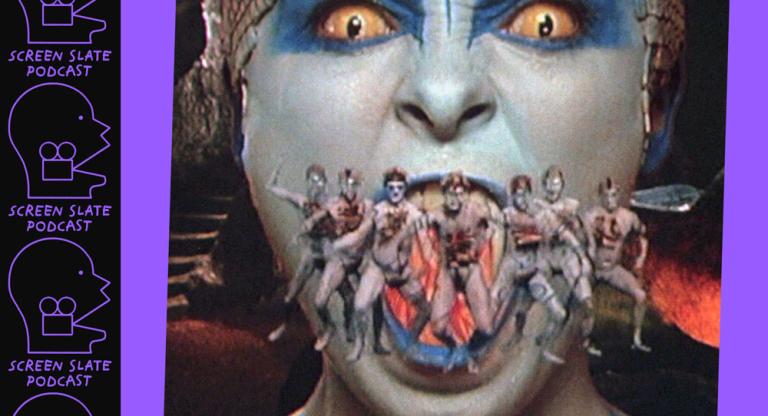Margaret Thatcher’s tenure as Prime Minister bookended England’s 1980s more-or-less simultaneously with Ronald Reagan’s presidency in America. But the two countries’ domestic filmmakers reacted to their conservative decades in very different ways. Hollywood embraced Reaganomics and Cold War militarism. When it wasn’t giving Oscars to nostalgic dramas like Driving Miss Daisy (1989), it was letting action heroes like John Rambo and Maverick go all America on the world.
British filmmakers, on the other hand, rebelled. “The 1980s was generally a time of downsizing, retrenchment, and upheaval,” notes the BFI’s Michael Brooke. Newcomers like Alex Cox and Clive Barker joined established provocateurs like Lindsay Anderson, producing a wave of anarchic films that smashed together the colorful British traditions of Victorian horror, punk rock, the occult, and Monty Python. While Stallone was fighting fictional battles in the name of American imperialism, British films were staging a cinematic coup.
The Lair of the White Worm (1988) emerged during this era of British filmmaking. Directed by the acclaimed provocateur Ken Russell, the film visits contemporary Derbyshire, where a shape-shifting pagan priestess (Amanda Donohue) stalks locals to sacrifice to an ancient serpentine god who lives beneath the quiet town. Russell’s signature flair and camp proved a perfect fit for the maximalism and chroma-key effects of the MTV era. The film is a luscious piece of folk horror about the chaos lurking underneath the conservative idyll of 1980s British society. A worm-god monster film may sound like a strange story to place in the context of Thatcher’s social policies, but a trademark of Russell’s most famous work is applying strangeness to history. (It’s telling that Russell titled his own autobiography after his 1980 film Altered States, a movie about an academic obsessed with hallucinogens.) His hits The Devils (1971) and Gothic (1981) are based on pivotal real-life incidents from Europe’s past, but Russell’s phantasmagorical perspective differentiates them from all existing docu-dramas.
In her quest to sick a giant snake upon a quaint English town, the seductive Lady Sylvia (Donohue) seeks revenge for Christianity’s centuries-old bricking-up of ancient pagan religions. Russell, meanwhile, is making his own vivid point about the repressive society in which the film was first released. In a standout performance, Donohue fully embraces the director’s bold and extravagant style of filmmaking. Even Hugh Grant, making an early-career beta-test of his boyish charm, is blown off the screen by Donohue’s priestess. The most striking scenes feature Sylvia transformed into a naked blue serpent woman who spits venom onto a crucifix, but her moments in human form are equally hypnotic—sometimes quite literally, as when pipe music coaxes Sylvia to slither out of a wicker basket like a charmed cobra. “Fancy praying to a god who was nailed to a wooden cross, who locked up his brides in a convent,” she hisses. “Poor little virgins masturbating in the dark.” It’s a line equal parts shocking, funny, and unforgettable—Donohue sinks her fangs into it. God save the Queen.
The Lair of the White Worm screens this evening, February 23, at Metrograph on 35mm as part of the series “Animal Farm: Snakes.” For more, the film is discussed at length on our podcast episode Russellmania.




